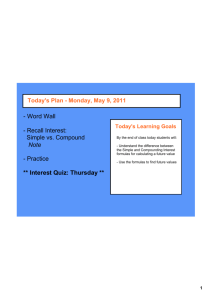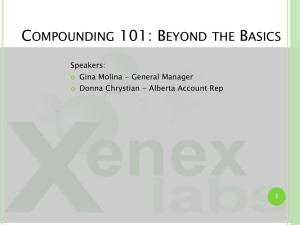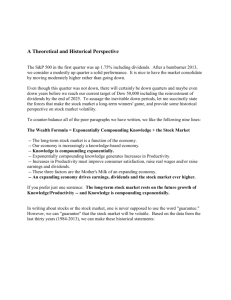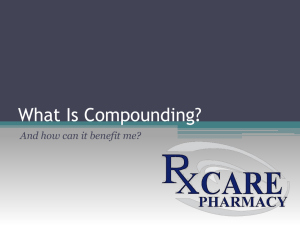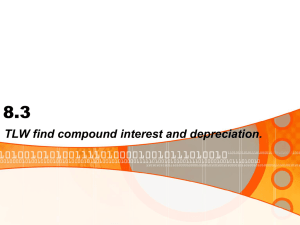General dispensing procedure
advertisement
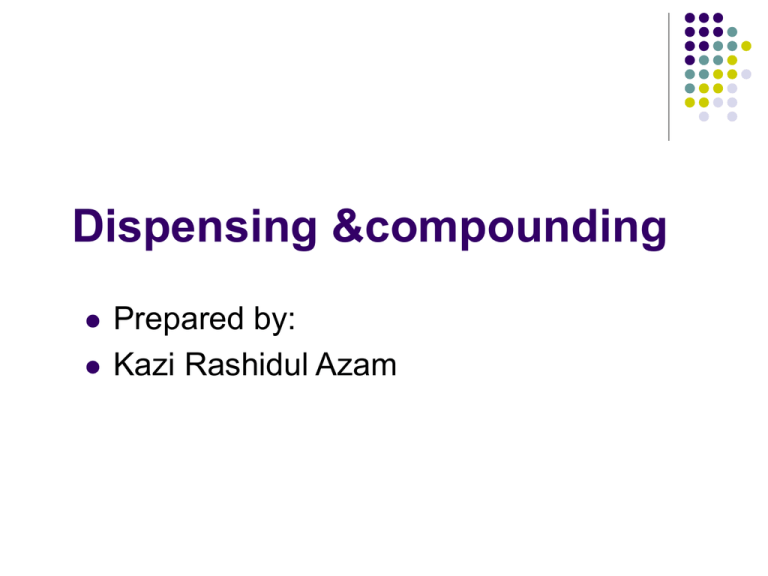
Dispensing &compounding Prepared by: Kazi Rashidul Azam Dispensing is concerned with the preparation and supply of medicine. It requires extensive knowledge of1. The stability of medicines and their ingredients 2. Principles of compounding 3. Dosage 4. Chemical, physical and therapeutical incompatibilities 5. Packaging methods 6. Labeling procedures, and 7. Legal requirements-affecting the storage, supply records, containers and labeling of substances affected by the poisons, misuse of drugs, therapeutic substance and medicines acts. General dispensing procedure: 1. Work on your own 2. Wear a freshly laundred overall coat. A well starched or preferably nylon coat reduces contamination of dispensed products with fibres and other particles. 3. Provide yourself with a clean glass cloth, a duster and either a swab or sponge. 4. work on a clean and tidy manner. 5. Read the prescription carefully; make sure you understand it and that it is legally correct. 6. If necessary, find the formula of the preparation in an appropriate source of information. Copy it into your practical book. 7. Check the doses of internal preparations 8. Find from an appropriate sources, if any ingredient is a poison. 9. Confirm that there are no pharmaceutical or therapeutical incompatibilities in the preparation. 10. If you are unsure of the correct method of preparation refer to your practical notebook, which should be well indexed. 11. Look up the storage conditions for the preparation 12. work out the calculations 13. Check the calculations 14. Collect the correct container and closure 15. We the main label and collect any special labels that are required. 16. Make the preparation, pack it in the container and polish the latter. 17. Check the labels and fix them to the container 18. Check the finished preparation 19. wrap the container and write the patients name and address on the wrapper. 20. Make the appropriate records The prescription: A prescription is an order from a doctor, dentist or veterinary surgeon for the supply of a medicine, dressing or surgical appliance to a patient. It contains the following informations1. Name, registration & address of the prescriber 2. The patients name and address: For a child the age is also given to help when the pharmacist is checking dose. 3. Date 4. A prefix: This is the sign Rx (take thou/you take/take it), which is an instruction to the pharmacist. It is derived from R, an abbreviation for the Latin word recip and possibly the latter ‘j’ an invocation to Jove (Jupiter) the god of healing. 5. The name and quantities of Medicaments to be supplied: a. An official (British National formulary, British Pharmaceutical ) Codex with the quantity required. b. A proprietary product, together with the quantity required. c. A special formula- in which case the quantity of each ingredient will be stated together with a description of the type of preparation, e,g. mixture lotion, tablet. 6. Instruction to the pharmacist (i.e. subscription) 7. Instruction for the patients : These may includea. The method of administration or application. b. The dose, if the preparation is for internal use . c. The time of administration of application. d. The diluent ( e.g. water) if relevant, or the method of application. e. The part of the body to which the preparation is to be applied, if tor external use. 8. The prescriber’s signature and address. 9. The Date on which the prescription was written. Compounding: The term compounding usually implies to mixing some ingredients In order to make medicinal substance. It may also refer to any small scale preparation of any dosage form according to the prescription in a dispensary or pharmacy. Compounding is a synonymous to dispensing but only difference is that dispensing includes make up and delivery of medicine to the patient but compounding is only mixing up ingredients or preparing the medicine. Compounding accuracy indicates the mixing of ingredients to make medicine in an accurate manner. Compounding accuracy is important to disperse the medicine properly to the patient for their safety. The major operation of a pharmacist is in the area of prescription compounding & dispensing. Compounding must be accurate also to administer a dosage form in a suitable way.

